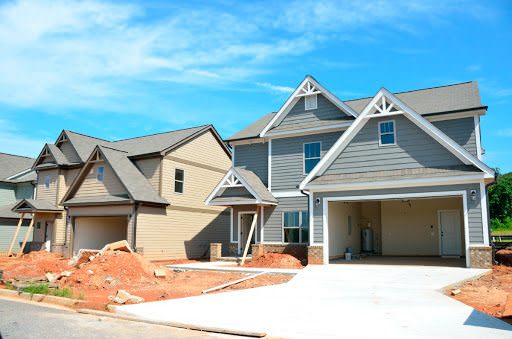
Examples of new construction inspection findings we’ve witnessed recently
A few new construction houses wound up requiring complete tear off and replacement of a brand new roof because the roof had not been correctly installed.
Several new construction houses hadn’t been correctly insulated with some inaccessible sections of roof completely un-insulated. Think tearing out finished ceilings and walls to insulate.
One house required extensive stucco replacement resulting from incorrect installation techniques.
Two houses required a structural engineer to evaluate and recommend repairs for structural issues: one with a damaged roof truss system, the 2nd an odd floor frame configuration.
According to the National Association of Home Builders, more than 3,000 components are employed in making a house. Which is a large amount of parts and that number doesn’t even include the fine detail of the way critical components such as screws, nails, adhesives and sealants are selected and installed. These 3,000 components are likely to be installed by roughly 20 different sub-contractors and each sub-contractor may employ as much as Four to five different employees working on the house. Upon completion, your property may have had in excess of 100 different people touching the more than 3,000 components, including sub-contractors for any of these: roofing, framing, painting, drywall, electrical, flooring, appliances, insulation, and on and on.
Yes….. But it’s built to code!
We know. The house is built to code, therefore it should be fine right? Below are four critical points to understand about how building code impacts residential house construction.
1. Codes Are Just a the Bare Minimum
The very first thing you should understand about building codes is they are basically a set of minimum standards by which constructing a house to any lessor degree is basically illegal. So building to local building codes is simply adhering to local minimum standards; it won’t make certain that “best practices” are utilized in constructing the house.
2. Construction Varies Regionally
The next thing to understand about codes is that they are based on national standards, and quality construction is very much a regional concern; you do not want to construct a house in Mississippi in the same way you would build a house in the mountains of Colorado, it just makes no sense. Building codes do adjust for this with different wind, climate and seismic zones, but the nuance of regional construction methods, materials, techniques and environmental challenges makes it difficult for codes to adopt perfectly to localized standards and necessities.
3. Building Officials Haven’t much Time
The degree to which local building officials are able to check on construction may vary by city, state and county, but in our experience, building inspectors and building departments are generally overworked and the fee structure for permits is not adequate for detailed on-site inspection of each and every system. We have found local building codes and local code enforcement really assists with inspecting the dwelling and wiring in houses, beyond these systems, we have found that inspection is inconsistent or completely lacking. We have been unable to find a study relating to this, however it would not surprise us if total on-site time for building officials during construction of a residential house is less than 4 hours – that isn’t much time to check more than 3000 components.
4. Building Codes Defer to Manufacturer’s Specifications
Many important house systems such as roofs, siding and furnaces must be installed in accordance with manufacturer’s specifications. Building code could have some general standards, but proper installation requires following manufacturer’s directions and there is generally nobody checking these things.
In conclusion, building codes and building departments do an excellent job in helping to make sure that safe and reliable houses are being constructed, but houses are extremely complex systems comprised of many components that happen to be installed by a small army of different contractors; even reliable builders with the best intentions are going to have difficulty executing everything on a residential build and there’s a huge gray area of workmanship that exists between code and best practices. It simply cannot hurt to have a fresh set of eyes go over the house to determine what things can be discovered.
A good new construction home inspection should give you the benefit of a 3rd party checking out the house. You should gain insights into the houses’ attributes and vulnerabilities; all houses have both. A third party home inspection can also add value by evaluating the overall design and quality of the building and it will give you a good idea of maintenance items to keep your eyes out for. It will most likely come up with a helpful punch list of small repair items that were overlooked. Occasionally, significant problems are uncovered that can save the home buyer and builder 1000s of dollars along with a nightmare of complex litigation and repairs.
Happy house hunting! We hope this helps you. If you would like us to assist you in finding your new home here in the Tampa Bay area, we are always available at 813-300-7116 or simply click here and we will be in touch with you shortly.